By Louise Irvine
The Saltburn movie, recently released on Prime Video, has taken the internet by storm. It has also inspired interest in Palissy, the French Renaissance potter, who features fleetingly in the plot. The dark movie about desire and privilege revolves around the relationship between an aristocratic English family, owners of a rare Palissy plate, and a less privileged Oxford University student, Oliver Quick.
Oliver is invited to Saltburn, the Catton family’s stately home, and he astonishes the family patriarch by knowing the work of Bernard Palissy, the 16th-century Huguenot ceramicist. He adds, “I’ve always loved his work, but I’ve never seen anything of his in real life.” That’s not surprising because original Palissy pieces are exceptionally rare and hardly ever come on the market. The plot thickens when an impoverished relative offers it to Sotheby’s auction house.
Bernard Palissy’s experiments to produce porcelain during the 1540s resulted in his Rustic ware, which featured realistic animals crawling through vegetation. Coiled vipers, slinking lizards and scaly fish were cast from life and naturalistically painted on platters. During his pottery experiments, Palissy and his family were impoverished for many years, and he burned their furniture and floorboards to feed the fires of his furnaces! He was imprisoned because of his religious beliefs, but fortunately, he was protected for a time by Queen Catherine de Medici. She commissioned him to create a ceramic grotto at the Tuileries Palace in Paris. Fragments from the remains of the grotto were excavated in 1878 and are now in the Louvre Museum.
Palissy’s passion for pottery inspired Victorian entrepreneurs to emulate his realistic flora and fauna and vividly colored glaze effects. Minton’s Palissy ware, developed by a French ceramicist, Leon Arnoux, was launched at the Great Exhibition of 1851 in London. The new ceramics soon became better known as Majolica ware after Italian Maiolica. Many factories produced Majolica ware in the late 19th century and there is an impressive collection at WMODA.
Doulton artists at the Lambeth Pottery in London admired Palissy’s work and painted tribute portraits of the master potter. John Eyre designed a monumental tile panel for the International Health Exhibition in 1884, donated to Queen Alexandra’s House in London by Sir Henry Doulton. Eyre also painted a circular Faience plaque, which is in the WMODA collection.
Palissy’s work also influenced a school of artists that flourished in the Portuguese town of Caldas da Rainha, north of Lisbon, between 1853 and 1920. WMODA has several Palissy-style pieces by the Mafra Pottery in the Secret Garden display in the new Hollywood museum. They are surrounded by Victorian Majolica garden urns, jardinières and statuary, which furnished conservatories in the great country houses of England, like the fictional Saltburn. The movie was filmed at Drayton House in Lowick, Northamptonshire, a spectacular stately home with 127 rooms. The privately owned mansion has become one of the stars of the show with its convincing lived-in appearance. There’s even a Lalique ashtray overflowing with cigarette butts. René Lalique was a fan of Palissy and named a glass vase embossed with shells after the potter.
Keep your eyes peeled for the Palissy plate in the Saltburn movie – blink, and you will miss it!
Read more about Majolica ware at WMODA
A Potted History of Jardinières
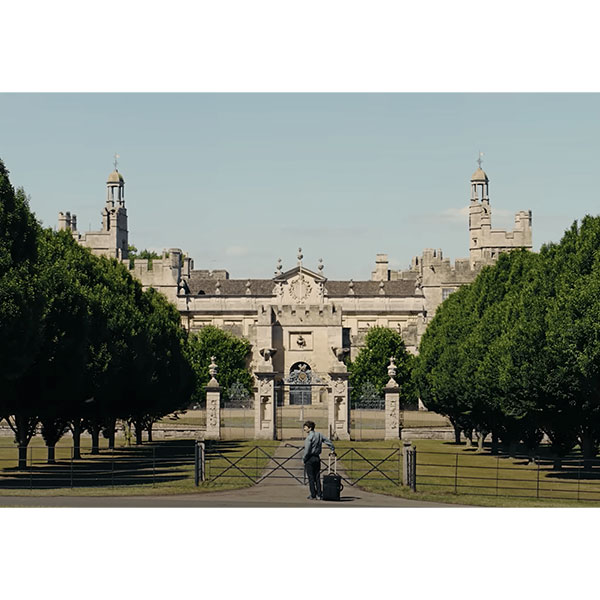
Saltburn Movie Courtesy Prime Video
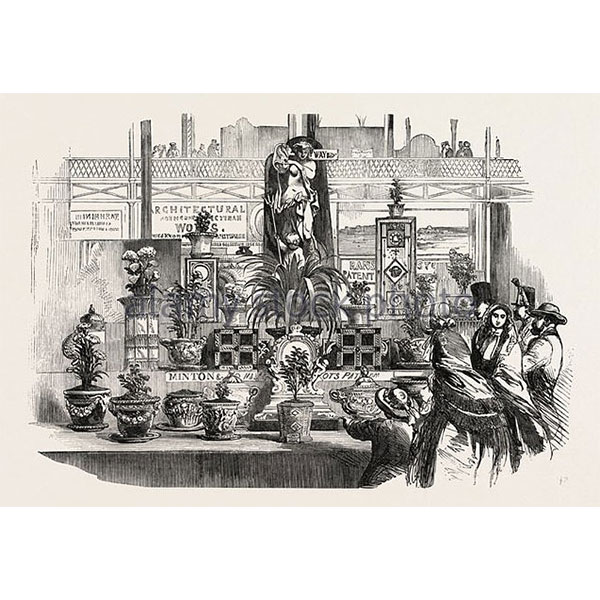
Minton at Great Exhibition
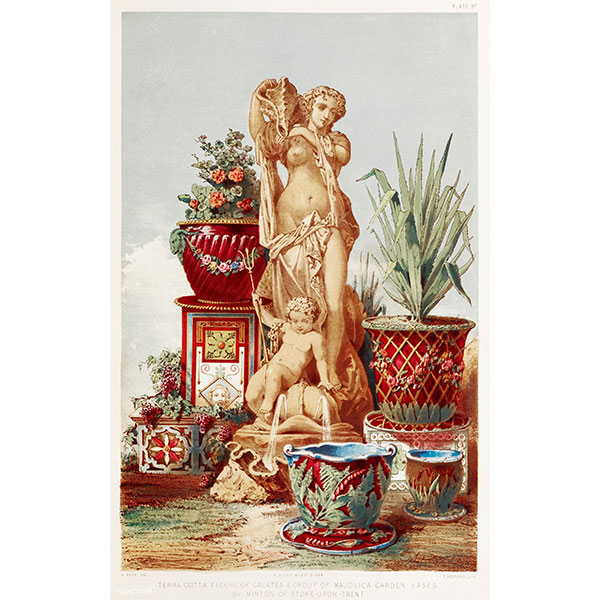
Minton Garden Wares Great Exhibition
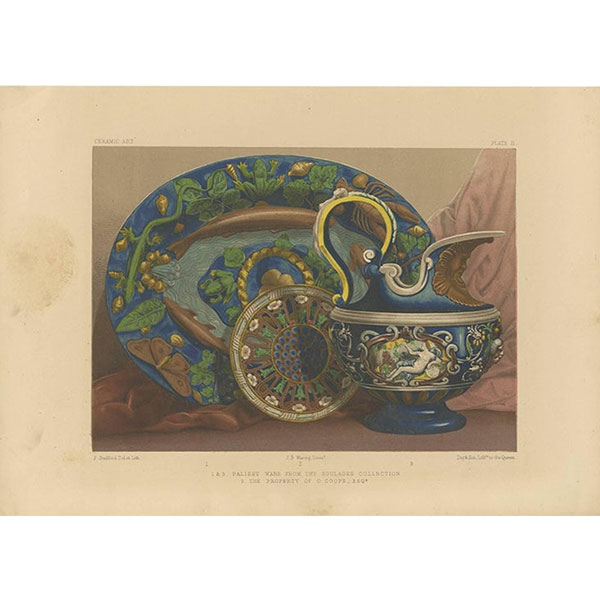
Palissy Ware 19th Century
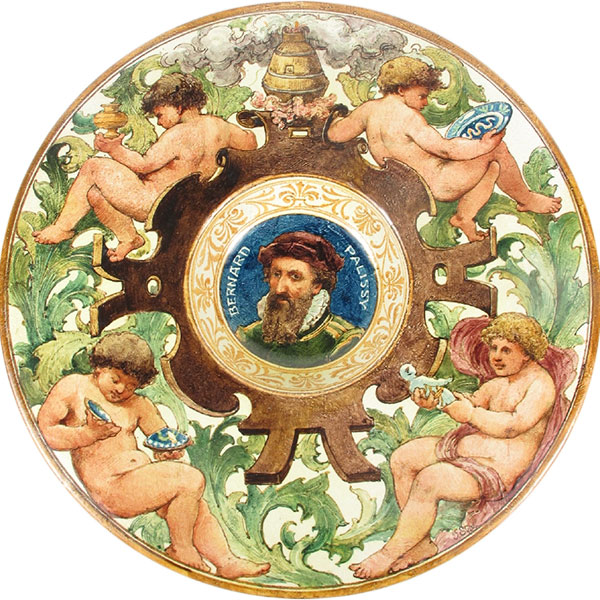
Doulton Faience Plaque of Palissy J. Eyre
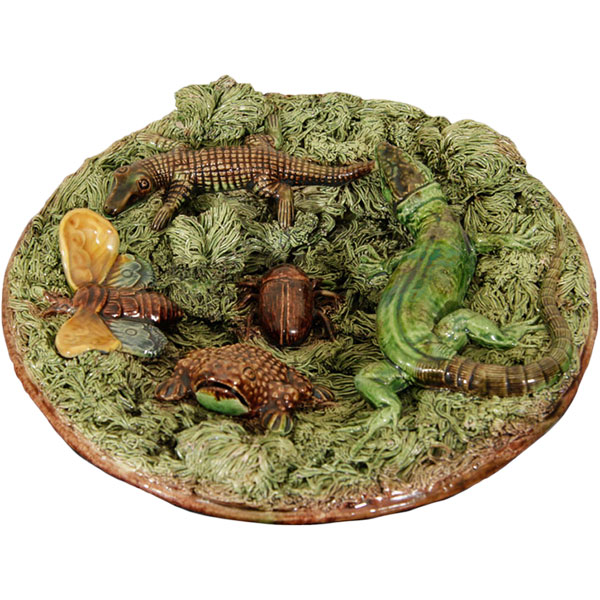
Mafra Palissy Style
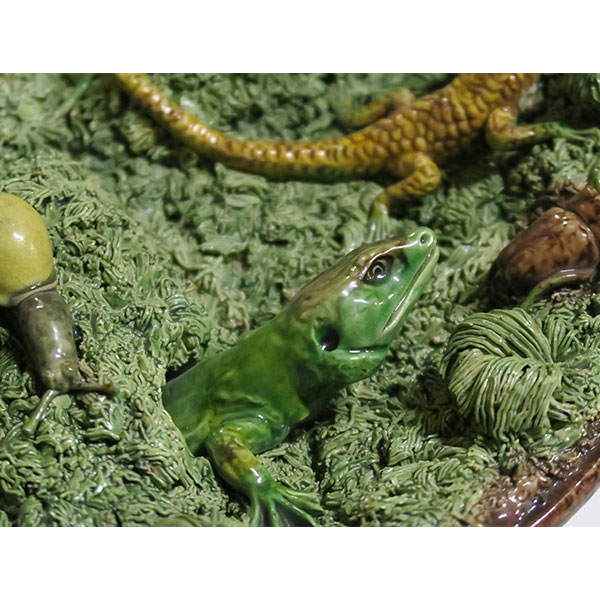
Detail of Mafra Palissy Style
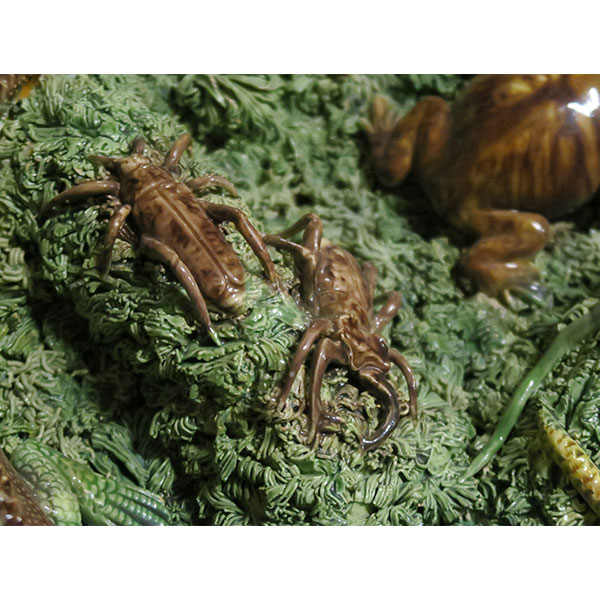
Detail of Mafra Palissy Style
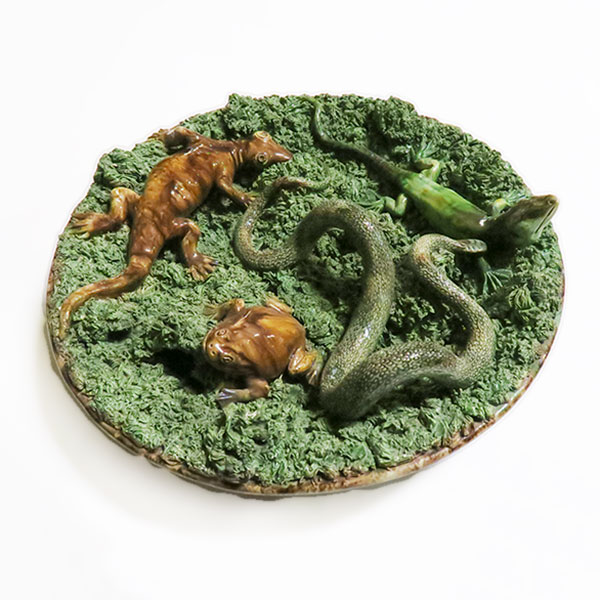
Mafra Palissy Style
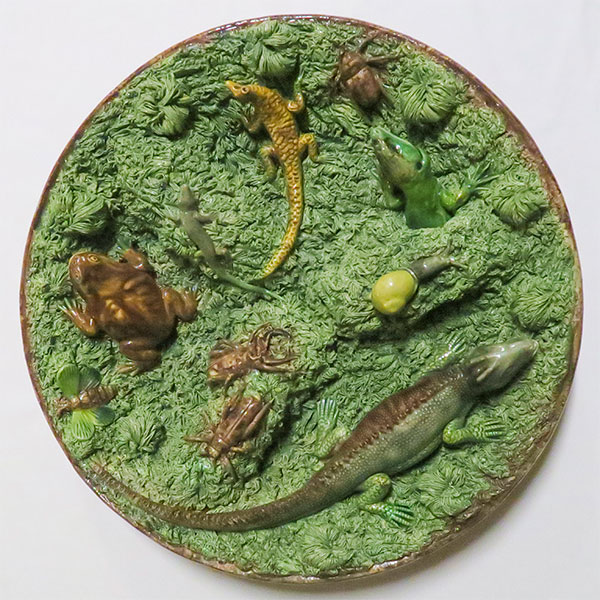
Mafra Palissy Style

Mafra Palissy Style

French Palissy Style Vase

French Palissy Style Vases

Palissy Style Vase Detail

Palissy Style Private Collection
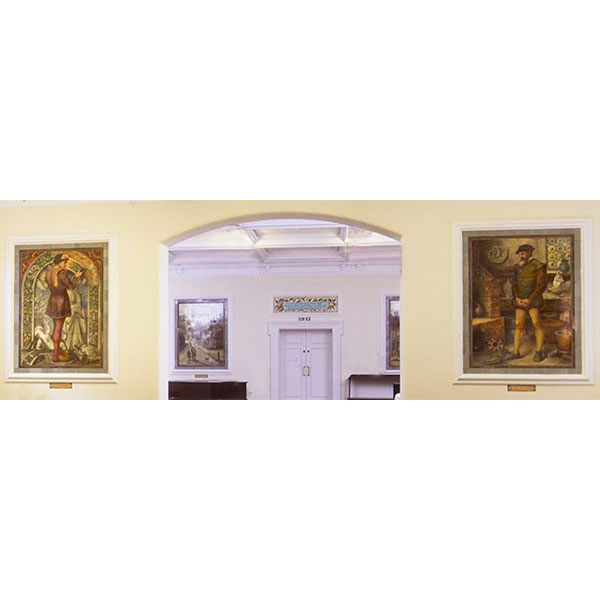
Doulton Palissy and Della Robbia Tile Panels Queen Alexandra's House

Bernard Palissy Tile Panel Detail

Secret Garden WMODA
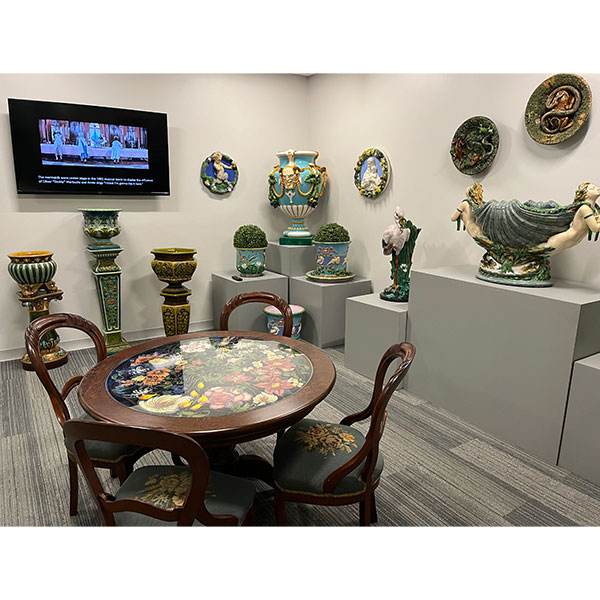
Secret Garden WMODA

Lalique Palissy Vase
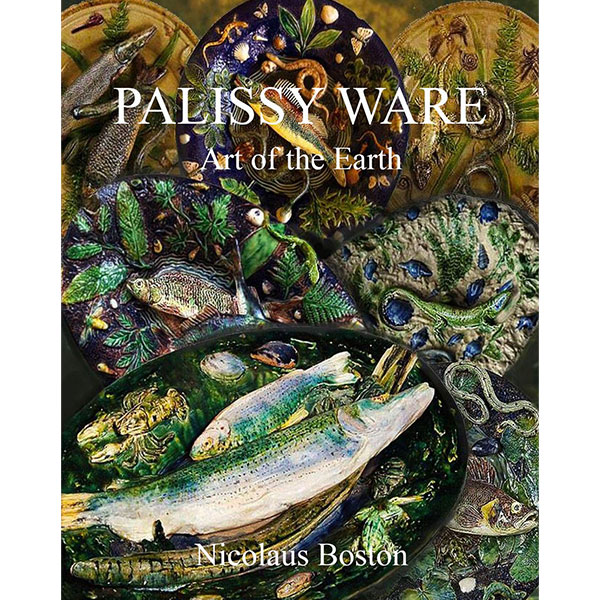
Art of the Earth Palissy Ware Book

Palissy Book

Engraving of Drayton House, the location for the Saltburn Movie
